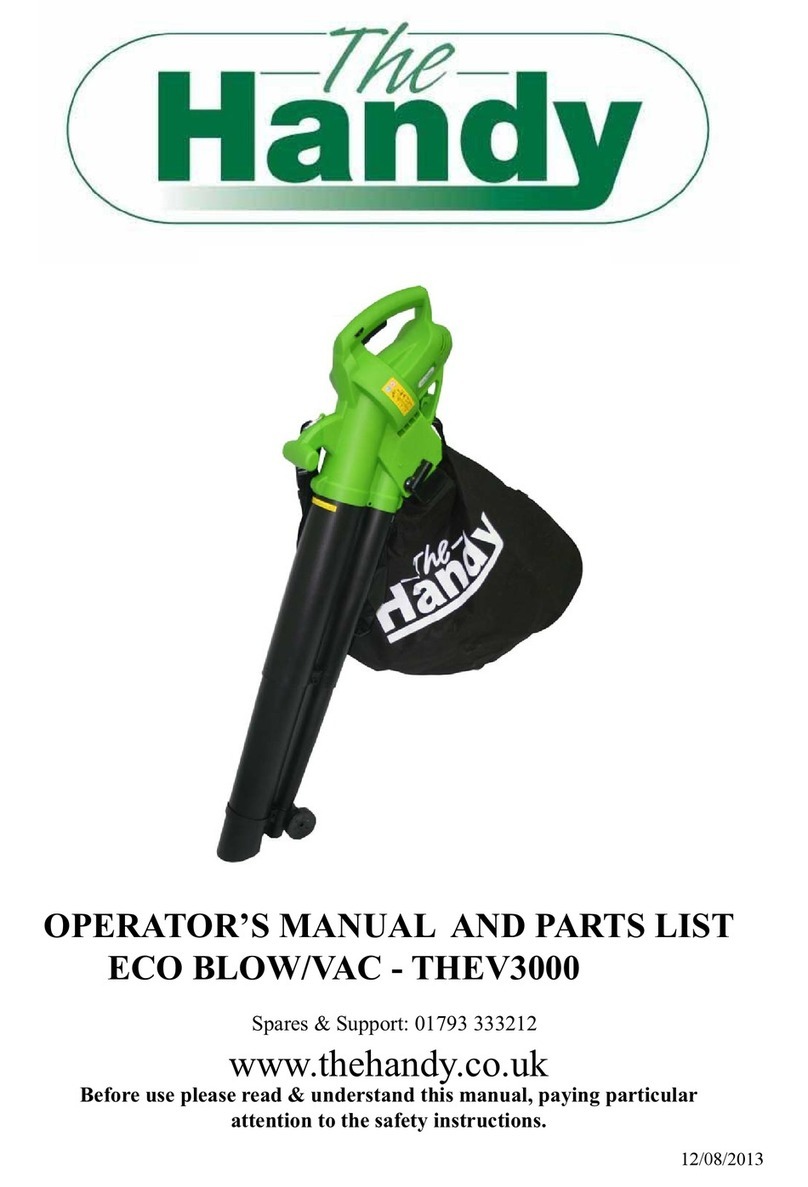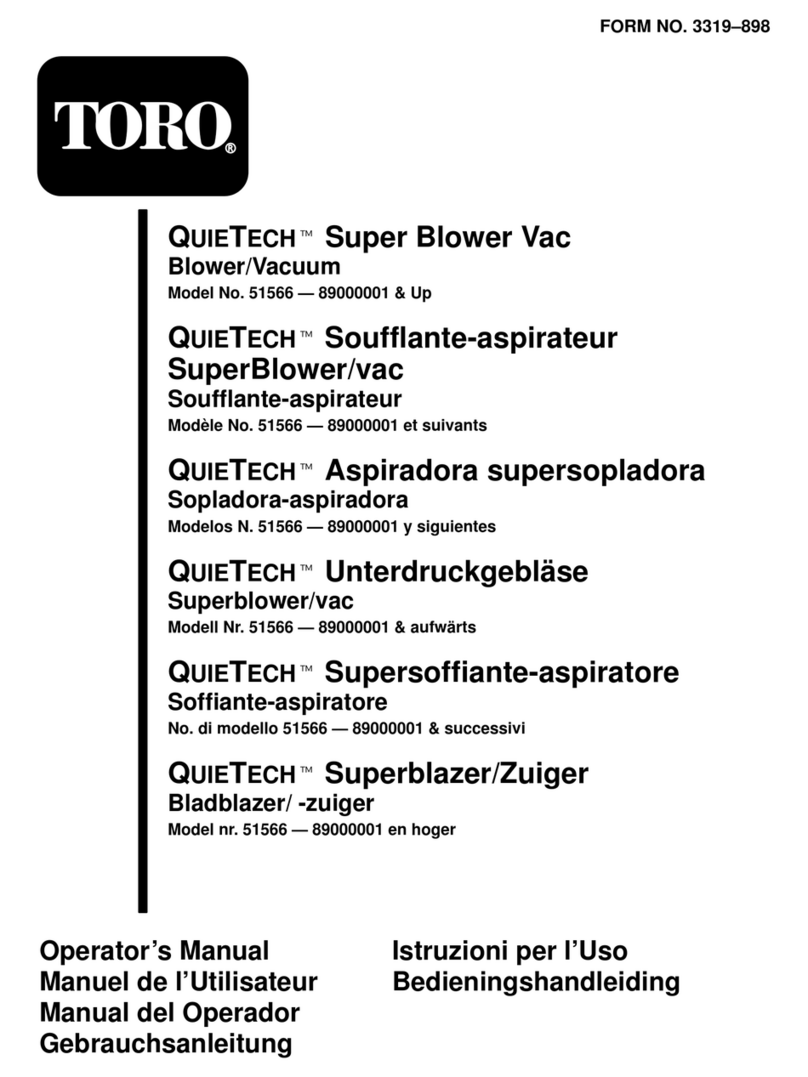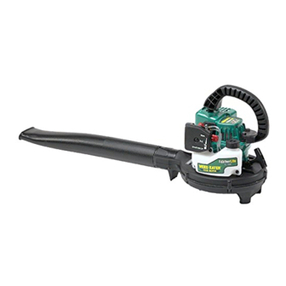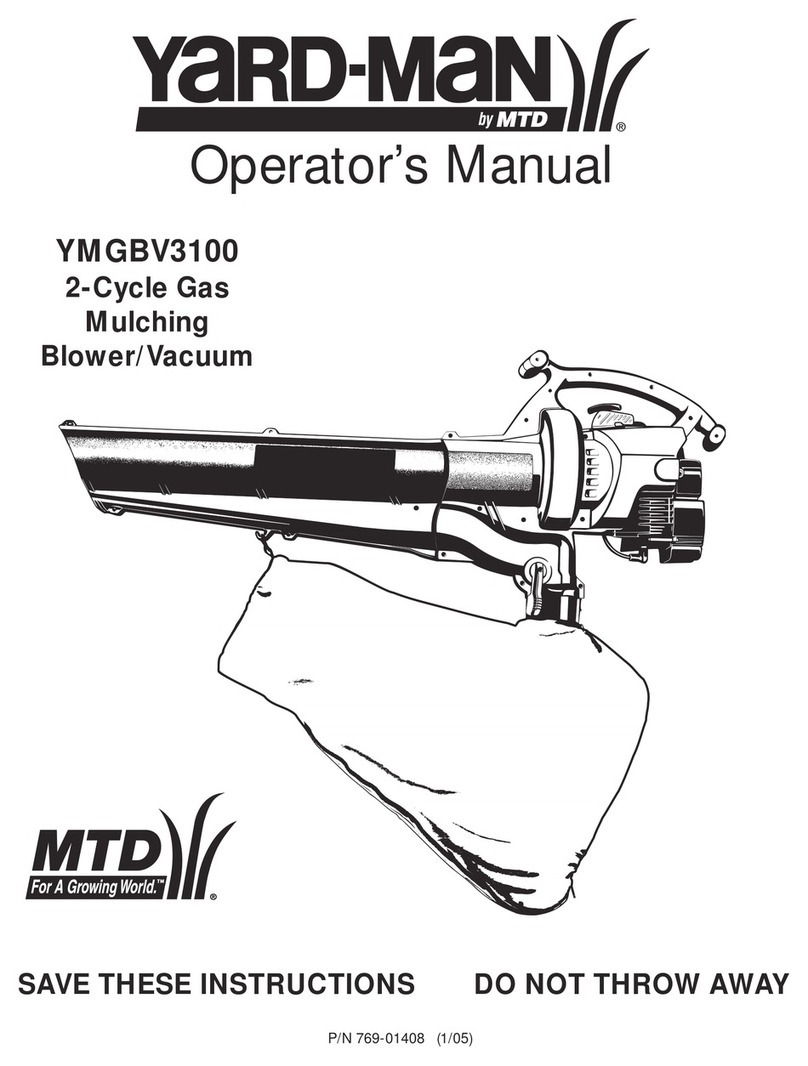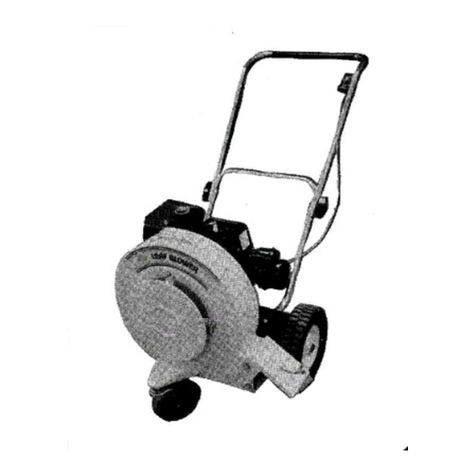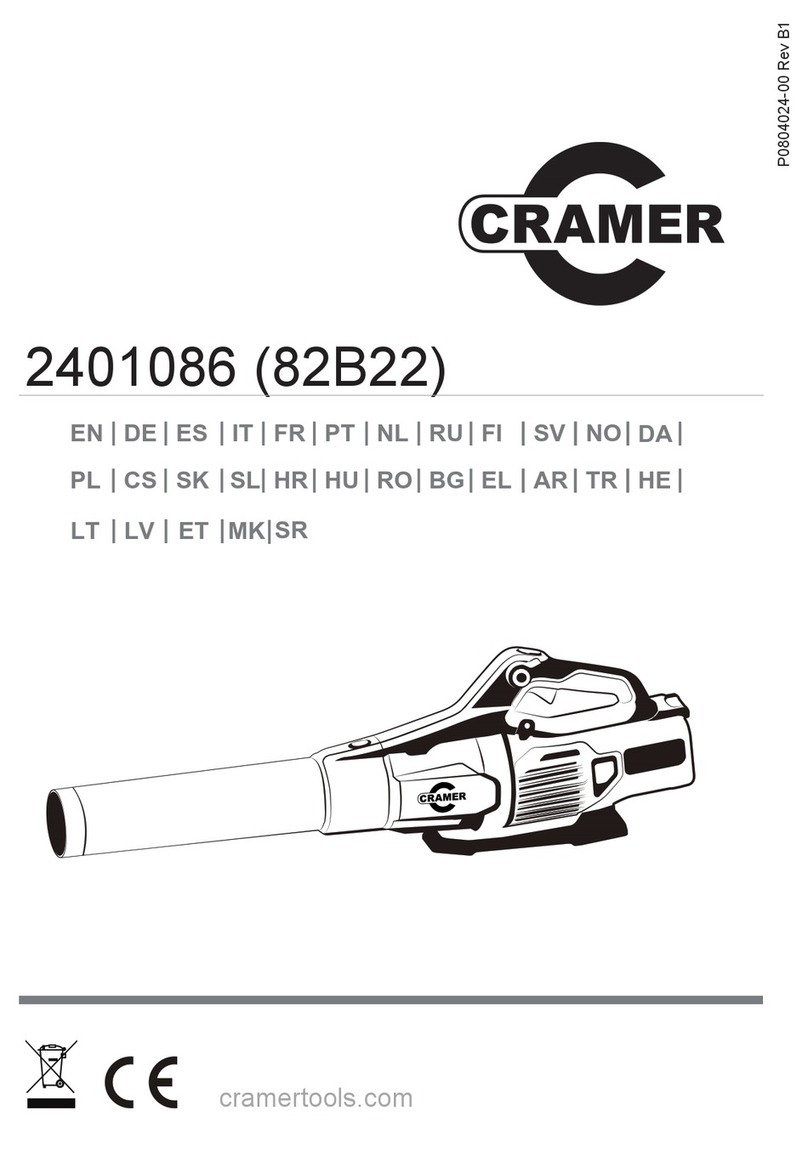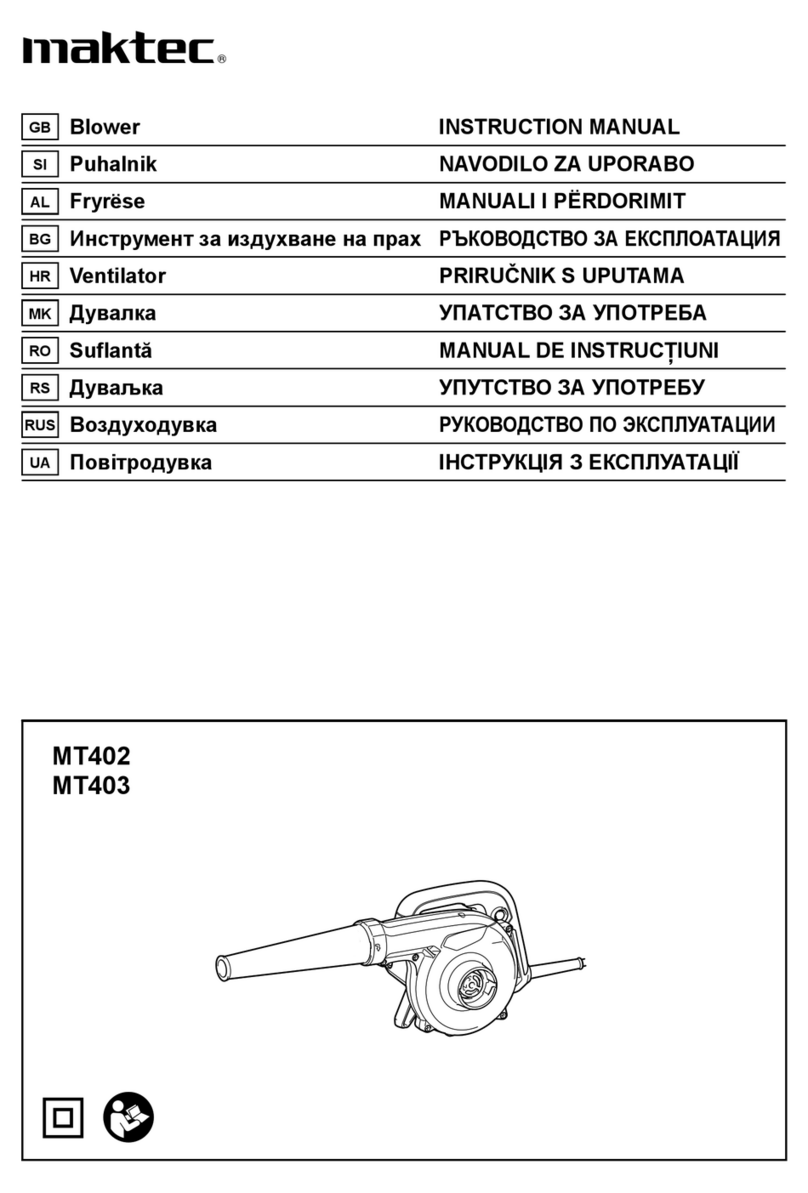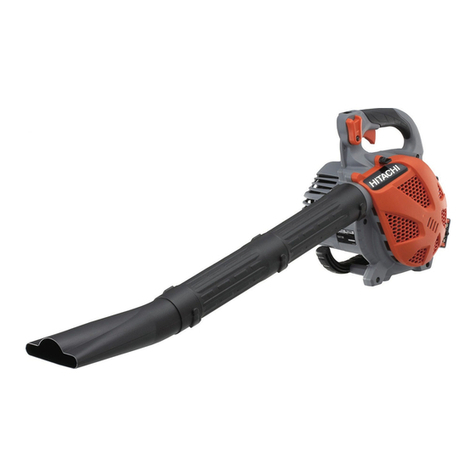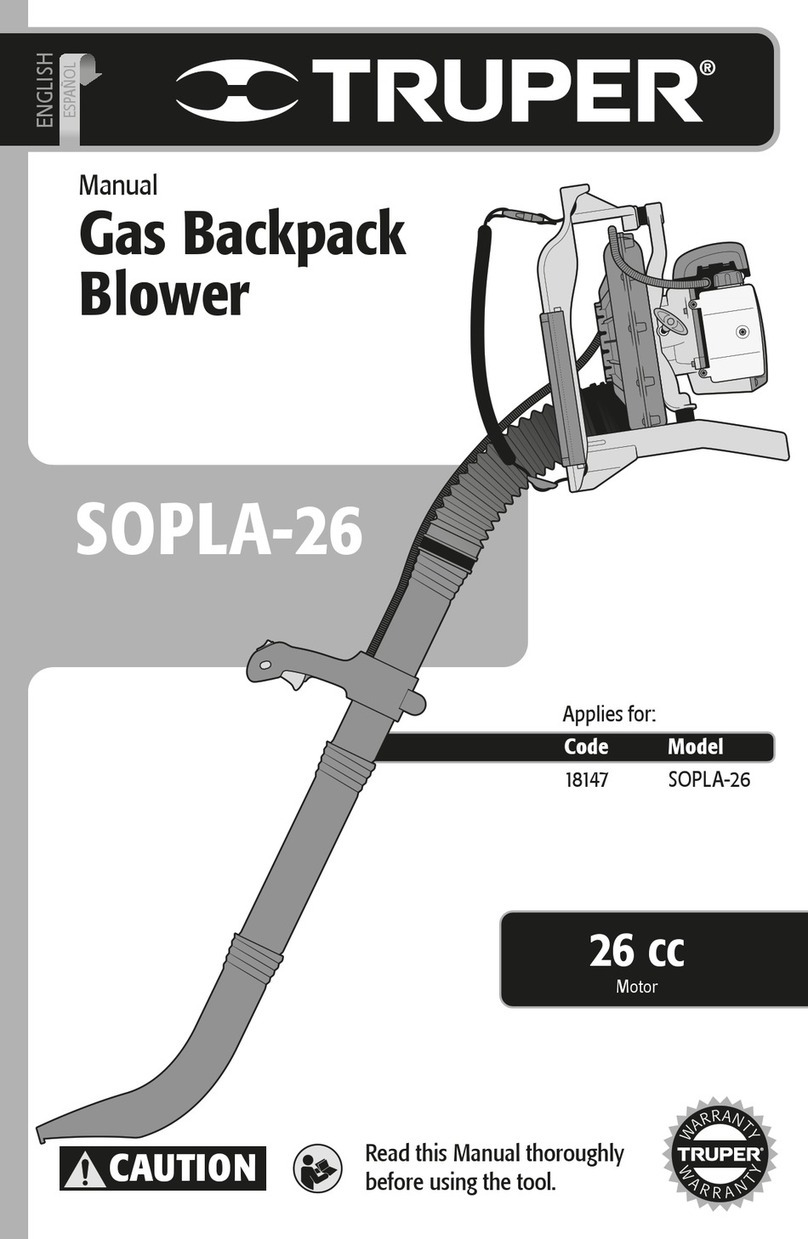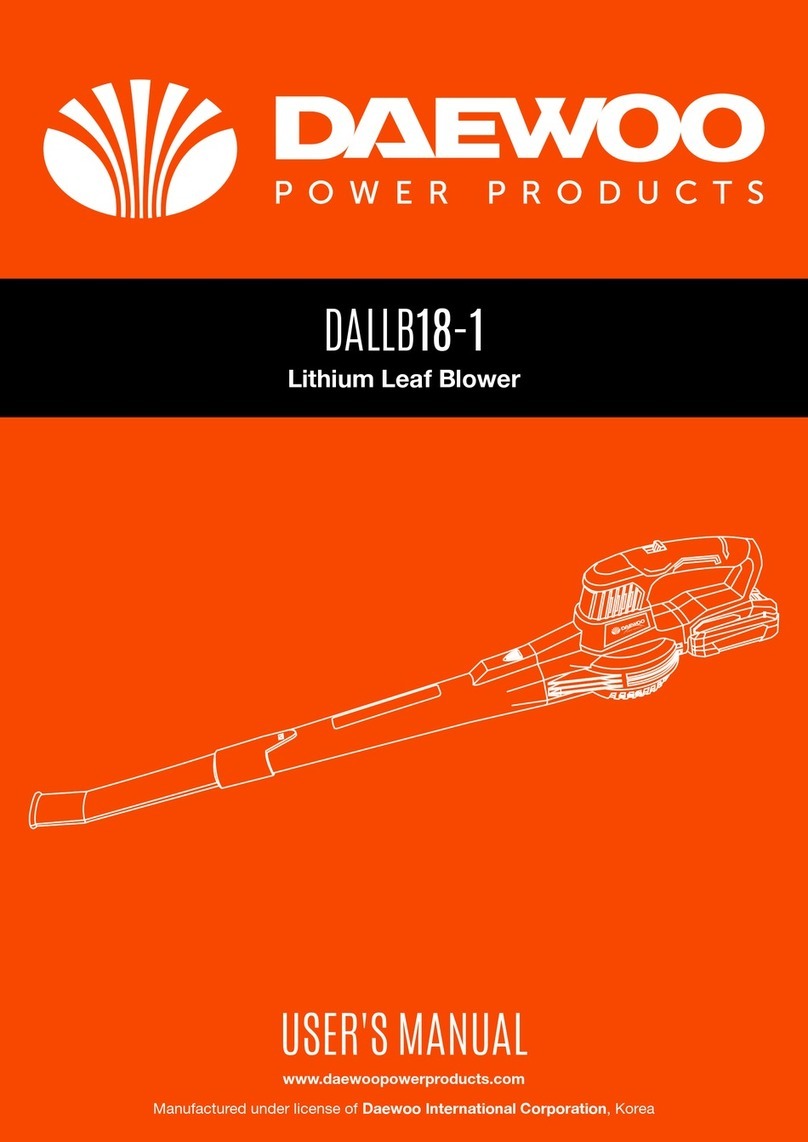Adp MX Series User manual

IM-MAH-0662403-07
April 2012
Installation Instructions
MX Series
Indoor Modular Blowers
Electric or Hot Water Heat
Table of Contents
AIR HANDLER SAFETY 2
INSTALLATION REQUIREMENTS 2
Tools and Parts 3
Location Requirements 3
Installation Configurations 3
Electrical Requirements 5
Ductwork Requirements 5
INSTALLATION INSTRUCTIONS 5
Inspect Shipment 5
Blower and Coil Assembly 5
Install Ductwork 6
Make Electrical Connections 7
Hydronic Coil Installation 9
Complete Installation 14
SEQUENCE OF OPERATION 17
AIR HANDLER MAINTENANCE 18
ASSISTANCE OR SERVICE 18
WARRANTY 19
! WARNING !
To install the MX Series Air Handler in the horizontal position a (2”) clearance
must be maintained between the apex of the evaporator coil and the top of the
Coil’s Cabinet. Therefore, the ADP Multi-position Evaporator Coils listed below
cannot be used in the horizontal position with the MX Series Air Handler. The
HD Series and V Series dedicated horizontal coils are recommended for these
applications. Model # _ A 0 7 _ _ _ _ _ _ _ _ _ _ _ _ _ _
Model # _ A 1 5 _ _ _ _ _ _ _ _ _ _ _ _ _ _
Model # _ E 2 7 _ _ _ _ _ _ _ _ _ _ _ _ _ _
Model # _ E 3 7 _ _ _ _ _ _ _ _ _ _ _ _ _ _
Model # _ E 4 8 _ _ _ _ _ _ _ _ _ _ _ _ _ _
Model # _ E 5 0 _ _ _ _ _ _ _ _ _ _ _ _ _ _

MX SERIES AIR HANDLER SAFETY
INSTALLATION REQUIREMENTS
These instructions are intended as a general guide only and do
not supersede any national or local codes in any way.
Compliance with all local, state, or national codes pertaining to
this type of equipment should be determined prior to installation.
Read this entire instruction manual, as well as the instructions
supplied in separate equipment, before starting the installation.
All models are designed for indoor installation only.
The installation of the blower section, field wiring, warm air
ducts, etc. must conform to the requirements of the National
Electrical Code, ANSI/NFPA No. 70 (latest edition) in the United
States, and any state laws, and local ordinances (including
plumbing or wastewater codes). Local authorities having
jurisdiction should be consulted before installation is made.
Such applicable regulations or requirements take precedence
over the general instructions in this manual.
Install the conditioned air plenum, ducts and air filters (not
provided) in accordance with NFPA 90B Standard for the
Installation of Warm Air Heating and Air-Conditioning Systems
(latest edition). The blower section is provided with flanges for
the connection of the plenum and ducts. Air filters must be
listed as Class 2 furnace air filters. The blower section is
shipped from the factory completely assembled.
Do not remove the cabinet knockouts until it has been
determined which knockouts will need to be removed for the
installation.
Select the final installation position that best suits the site
conditions. Consider required clearances, space, and routing
requirements for refrigerant line, condensate disposal, filters,
ductwork, wiring, and accessibility for service. Refer to the rating
plate on the blower section for specific information.
This product may contain fiberglass wool insulation.
Glass wool fibers are known to the State of
California to cause cancer. Disturbing insulation
during installation, maintenance, or repair may
expose you to glass wool fibers and may cause
respiratory, skin or eye irritation. For further
information on risks associated with fiberglass wool,
consult Material Safety Data Sheet available at
OEM.
WARNING!
Your safety and the safety of others are very important.
We have provided many important safety messages in this manual and on your appliance. Always read and obey all safety
messages.
This is the safety alert symbol.
This symbol alerts you to potential hazards that can kill or hurt you and
others.
All safety messages will follow the safety alert symbol and
either the word “DANGER” or “WARNING.” These words mean:
You can be killed or seriously injured if
you don’t immediately follow
instructions.
You can be killed or seriously injured if
you don’t follow instructions.
All safety messages will tell you what the potential hazard is, tell you how to reduce the chance of injury, and tell you what
can happen if the instructions are not followed.
2

Tools and Parts
Gather the required tools and parts before starting installation.
Read and follow the instructions provided with any tools listed
here.
Tools Needed
•¼” nut driver
•Level
•Screwdriver
•Adjustable wrench
•Tape Measure
•Hammer
•Sealant
•UL listed wire nuts
Parts Needed
Check local codes, check existing electrical supply, and read
“Ductwork Requirements,” and “Electrical Requirements,” before
purchasing parts.
Location Requirements
NOTE: When the unit is installed in a very humid space and
used in cooling applications, excessive sweating may occur on
outside of unit. To prevent excessive sweating wrap unit with 1”
fiberglass insulation. All openings should be sealed to prevent
air leakage that could cause condensate to form inside the
cabinet.
•If installed in an unconditioned space, sealant should
be applied around the electrical wires, refrigerant
tubing, and condensate lines where they enter the
cabinet.
•Electrical wires should be sealed on the inside where
they exit the conduit opening. Sealant is required to
prevent air leakage and from condensate from forming
inside the blower, control box, and on the electrical
controls.
•The blower and its complementing coil must be
installed in such a way as to allow free access to the
blower/control compartment.
•The blower and its complementing coil must be
installed with a ¾” drop in the horizontal position
towards the drain pan to ensure proper condensate
drainage. The blower and coil should also be tilted ½”
from back to front toward the drain line.
Installation Clearances
Non-Ducted Return Closet Installation
The blower and coil can be installed in a closet with a false
bottom to form a return air plenum or be installed with a return
air plenum under the coil section.
Louvers or return air grilles are field supplied. Local codes may
limit application of systems without a ducted return to single-
story buildings.
•For a unit installed in a closet with a louvered return
opening, the minimum open area for the louvers will be
-320 square inches for 08 models
-360 square inches for 12 models
-450 square inches for 16 and 20 models
•If the free area is not known, assume a 25% free area
for wood or a 75% free area for metal louvers or grilles.
Using the louver dimensions and the 25% or 75%
assumption, determine if the louver open area meets
the minimum open area listed above.
•If the return air plenum is used, the return air grille
should be immediately in front of the opening in the
plenum to allow for the free flow of return air.
•When not installed in front of the opening, there must
be adequate clearance around the MX Series Air
Handler to allow for the free flow of return air.
Installation Configurations
For ease in installation, it is best to make any necessary coil
configuration changes before connecting the MX Series Air
Handler to the coil.
Vertical Installations
Upflow
The blower should be set on top of the coil section being used
and the blower must be supported on the bottom only and set
on solid floor or a field supplied supporting frame.
Downflow
Turn the Air Handler upside down and place the evaporator coil
on top of the blower. Install the two supporting brackets
(support brackets are included with all MX Series Air Handlers)
between the Air Handler and Evaporator Coil to ensure a proper
fit between the two pieces of equipment. The blower must be
supported on the bottom only and set on a solid floor or a field
supplied supporting frame.
For installations of the MX Series Air Handler with hot water
heating in the downflow configuration ensure that there is
sufficient space between the plenum and the Air Handler to
make the hot water piping connections.
Side Return (Hot water applications only)
Cut and remove panel on the non-motor side, as indicated by
perforations.
Attach evaporator coil with sheet metal screws (if using).
Ensure bottom portion of unit is sealed properly to prevent air
leakage.
This can be used in an upflow or downflow position.
SIDE RETURN IS NOT APPROVED FOR USE WITH
ELECTRIC HEAT.
IMPORTANT
The Clean Air Act of 1990 bans the
intentional venting of refrigerant (CFC’s and
HFC’s) as of July 1, 1992. Approved
methods of reclaiming must be followed.
Fines and/or incarceration may be levied for
non-compliance.
3

Upflow Configuration with MX Series Air Handler on top of
an evaporator coil.
Downflow Configuration with MX Series Air Handler
underneath an evaporator coil. Make certain to turn Air
Handler Upside Down as shown in the above figure.
Horizontal Installations
Horizontal installations can be left-hand or right-hand air
supplied. Adequate support must be provided to ensure cabinet
integrity. Ensure that there is adequate room to remove service
and access panels if installing in the horizontal position. Refer
to instructions provided with coil for proper horizontal
installations.
Horizontal Configuration of Blower with a
multi-position coil.
Horizontal Configuration of Blower with an ADP Dedicated
Horizontal “A” Coil.
IMPORTANT:
•Refer to the instructions provided with the coil being
used to determine how the secondary drain should be
trapped and piped.
•When an evaporator coil is installed in an attic or
above a finished ceiling, an auxiliary drain pan should
be provided under the MX Series Air Handler and coil
as specified by most local building codes.
Conversion from Vertical to Horizontal
The MX Series Air Handler can be converted from operating in a
vertical to a horizontal position by installing supporting brackets
(included with all MX Series Air Handlers) between the two
pieces of equipment. A horizontal condensate drain pan (not
included with the MX Series Air Handler) would also be needed.
Suspended Cabinet Installation
NOTE: MX Series Air Handlers cannot be installed horizontally
lying on or suspended from either the front or back of the MX
Series Air Handler. If installed horizontally the blower must be
positioned with one side parallel to the floor.
The suspending means must be field fabricated, and should
consist of 2 “cradles” made by attaching 2 rods to a length of
angle iron or suitable gauge steel.
4

Electrical Requirements
NOTE: Use copper conductors only.
•All field wiring must be done in accordance with
National Electrical Code, applicable requirements of
UL and local codes, where applicable.
•Electrical wiring, disconnect means and over-current
protection are to be supplied by the installer. Refer to
the MX Series Air Handler rating plate for maximum
over-current protection, minimum circuit ampacity, as
well as operating voltage.
•The power supply must be sized and protected
according to the specifications supplied on the product.
•This MX Series Air Handler is factory-configured for
either 240 Volts or 120 Volts, single phase, 60 cycles.
For 208-volt applications, see “208 Volt Conversion” in
the “Make Electrical Connections” section.
•Refer to the instructions provided with the accessory
for proper installation.
Ductwork Requirements
•Install the conditioned air plenum, ducts and air filters
(not provided) in accordance with NFPA 90B Standard
for the installation of Warm Air Heating and Air-
Conditioning Systems (latest edition).
•The MX Series Air Handler is provided with flanges for
the connection of the plenum and ducts.
•Air filters must be listed as Class 2 furnace air filters.
•Supply and return ductwork must be adequately sized
to meet the system’s air requirements and static
pressure capabilities. Ductwork should be insulated
with a minimum of 1” thick insulation with a vapor
barrier in conditioned areas or 2” minimum in
unconditioned areas.
•Supply plenum should be the same size as the flanged
opening provided around the blower outlet and should
extend ideally at least 3 ft. from the MX Series Air
Handler before turning or branching off plenum into
duct runs. The plenum forms an extension of the
blower housing and minimizes air expansion losses
from the blower.
Installation Instructions
Inspect Shipment
The blower section is completely factory assembled, and all
components are performance tested. Each unit consists of a
blower assembly and controls, in an insulated galvanized steel
factory finished enclosure. Knockouts are provided for electrical
wiring entrance.
1. Check the unit rating plate to confirm
specifications are as ordered.
2. Upon receipt of equipment, thoroughly inspect it
for possible shipping damage. Closely examine
the unit inside the carton if the carton is damaged.
3. If damage is found, it should be noted on the
carrier’s freight bill. Damage claims should be filed
with carrier immediately. Claims of shortages
should be filed with the seller within 5 days.
NOTE: If any damages are discovered and reported to the
carrier, do not install the unit because your claim may be
denied.
Blower and Coil Assembly
Note: Read and follow coil installation instructions to
ensure proper installation of refrigerant lines
and drain connections.
Upflow Configuration
1. Ensure the blower section matches the coil being
used.
2. The bottom of the blower section contains a ½”
gasket. Check to make sure gasket is attached to the
bottom of the blower section.
3. Position the blower section over the coil opening or
under the coil depending on your desired
configuration.
4. The MX is designed to fit perfectly with the ADP “C”
depth (20.5”) coil. If “E” depth is used, modify the
duct flange as follows: with the front of the MX and
coil aligned, snip the rear coil flange on each side so
that the MX will sit level on the coil (similar to the
pictures shown in the section “Horizontal
Configuration With Dedicated Horizontal A (HD) Coil.”
5

Upflow configuration
5. To secure the MX Series Air Handler fasten the duct
flanges of coil with screws to the duct flanges of the
blower section.
Horizontal Configuration With
Dedicated Horizontal “A” (HD) Coil
1. Ensure the proper blower section matches the coil.
MX Series Air Handler and HD Coil
2. The bottom of the blower section contains a ½” gasket.
Check to make sure gasket is attached to the bottom of
the blower section.
3. Cut a ¾” slot on the top and bottom flange of the coil.
Bend flange on the coil down 90 degrees or you can
cut off the flange.
Blower Section (left) and top of coil (right) with ¾” slot.
Blower Section (left) and bottom of coil (right) with ¾” slot.
4. Position the blower section up against the coil opening.
Front of blower (left) connected to a HD coil (right).
Back of HD coil (left) connected to a blower (right).
5. Fasten duct flanges of coil to duct flanges of blower
section with screws to secure MX Series Air Handler.
Install Ductwork
IMPORTANT:
•Install ductwork in accordance with NFPA 90B and any
local codes.
•Connect supply air duct to the flange on top of the
blower section of the MX Series Air Handler. If an
isolation connector is used, it must be nonflammable.
•Duct connections for the MX Series Air Handler with
hot water heat must allow room for water piping
connections to be made in upflow and downflow
configurations.
•A return air duct system is recommended. If the unit is
installed in a confined space or closet, a return
connection must be run, full size, to a location outside
the closet.
6

Make Electrical Connections
240-Volt or 120 Volt Installations
1. Disconnect all power supplies.
2. Remove the MX Series Air Handler access panel.
3. Route the field supply wires to the MX Series Air
Handler electrical connection box.
4. Using UL listed wire nuts; for 240 Volts connect the
field supply wires to the MX Series Air Handler (black
to black and yellow to yellow). For 120 Volts connect
the field supply wires to the MX Series Air Handler
(black to black and white to white).
5. Connect ground wire to ground terminal marked
“GND.”
6. Replace the MX Series Air Handler access panel.
208-Volt Conversion
1. Disconnect all power supplies.
2. Remove the MX Series Air Handler access panel.
3. Move the 2 connected black transformer leads from the
240-volt terminal on the transformer to the 208-volt
terminal on the transformer. See “Wiring Diagram –
Electric Heat.”
7

4. Install conduit-opening plugs in any unused openings.
5. If circuit breakers or pull disconnects are used, the
front panel knockouts will need to be removed.
6. Reinstall the MX Series Air Handler access panel.
7. Reconnect power.
8. Dispose of/recycle all remaining parts.
Changing Circuit Breaker Orientation
For Air Handlers with Circuit Breaker Line Voltage
Connections:
If the MX Series Air Handler is positioned in a horizontal
left-hand discharge this position will require no change in
the circuit breaker installation orientation. However, if the
Air Handler is installed in a horizontal right-hand discharge
position, the breaker will need to be installed so that the UP
position of the breaker is the ON position. The circuit
breaker orientation change is required by UL 1995, Article
26.18 (25 Sep 2005).
NOTICE
Copper tubing is recommended, but other
approved materials are acceptable.
WARNING!
Solder joints on domestic water lines are to
be made with NO-LEAD SOLDER.
NOTICE
The State of MA requires the use of a
pump timer on domestic water applications
to periodically circulate water during the off
cycle. This pump timer requirement is a
standard factory installed feature on all MX
Series Air Handlers with hot water coils. A
50’ maximum distance between water
heater and air handler is also required.
NOTICE
In addition to the standard factory installed
freeze protection control on all MX Series
Air Handlers with hot water heat it is
recommended that all water piping be
adequately insulated to prevent freezing
when piping is run in an unconditioned
space, such as attics, crawl spaces, or
within structures that may be unoccupied
during freezing conditions.
8

Hydronic Coil Installation
ADP MX Series Air Handlers with hot water heating coils
can be used with potable water systems (Not Approved
for potable water systems in the State of MA) and are
shipped with or without circulating pumps. Circulating
pump kits are also available for field installation. Refer to
pipe and pump sizing in the Air Handler’s Engineering &
Specification Guide for units with external pumps.
To determine water heater gallon capacity
A minimum 40 gallon high recovery and/or high efficiency
gas or oil fired water heater is recommended. The
following volume-sizing guide is satisfactory in most
areas. Proper water heating sizing should consider both
the gallon capacity and the BTU input of the water heater.
1. Determine Volume
Water Heater
CFM Requirements
600-800 40 gallons
1000-1200 40 gallons
1400-1600 Either 2 -40 gallons piped together,
1 high input 50 gallon (63,000 to
75,000 Btu/hr input), or 1 –72 (or
higher) gallon tank.
2000 Any combination of water
heaters piped together
with a total output of
105,000 Btu/hr.
2. Determine water heater BTU/HR input
requirements.
Assume water heater recovery efficiency of 76%
BTU/HR input=
Mild climates: structure heat loss X 1.51
Cold climates: structure heat loss X 1.58
Typical Installation with Domestic Hot Water Heater, many
variations on external valves are possible.
Hot Water Coil Water Purging
Purge valves comes standard on all MX Series Air
Handlers with hot water coils. Take precautions while
purging the Air Handler to keep the Multi-function Control
Board and other electrical components from getting wet.
Close the supply valve (Inlet) and open the water return
(Outlet). Manually open purge valve, use bucket or hose
to discard water during purging process. Close the purge
valve. Once return line is purged, close return valve
(Outlet) and open supply valve (Inlet). Open purge valve,
use bucket or hose to discard water during purging
process. Close purge valve.
Apply power to the fan coil. Engage pump to verify
proper flow direction the right (IN) should be
warmer/quicker than the left (OUT).
Outlet Valve
Inlet Valve
Water Heater
Air Handler
Cold
Water
In
Hot Water Out
Flow
Pump/Check
Valve Assy
Bleed Valve
CAUTION
Open bleed valve while pump is running to
remove any residue/deposits left from the
installation process. Hot water is preferred
in this process. NO CHEMICALS
CAUTION
Do not engage pump until the purge
process is completed.
9

Thermostat Connections - 208/240 Volt
Thermostat MX Series Air Handler
Condensing Unit
Cooling Only
Thermostat MX Series Air Handler
Heating Only (Electric Heat Kits are available for Field
Installation Only)
Thermostat MX Series Air Handler
Condensing Unit
Cooling with Electric Heat (Electric Heat Kits are
available for Field Installation Only)
Thermostat MX Series Air Handler Heat Pump
*Connect common (C) wire only if required. See
Thermostat Installation Instructions.
Heat Pump with Electric Heat (Electric Heat Kits are
available for Field Installation Only)
10

Thermostat Connections - 120 Volt
Thermostat Air Handler Control Board
Condensing Unit
Cooling Only
Thermostat Air Handler Control Board
Hot Water Heat Only
Thermostat Air Handler Control Board
Condensing Unit
Cooling with Hot Water Heat
Thermostat Air Handler Control Board Heat Pump
*Connect common (C) wire only if required. See Thermostat Installation
Instructions.
Heat Pump with Hot Water Heat
11

Wiring Diagram-Electric Heat
(Electric Heat Kits are sold separately and are not Factory Installed)
12

Wiring Diagram-Hot Water Heat
If your unit is equipped with a multi-function control
board, then for electric heat installations insure
that heat selector pin is set to “E”.
13

Complete Installation
NOTE: Refer to outdoor unit installation instructions for system
start-up instructions and refrigerant charging instructions.
PRE-Start Check
•Is unit properly located, secure, and serviceable?
Does the MX Series Air Handler and Evaporator Coil
exhibit a ¾” pitch in the horizontal position towards the
drain pan to ensure proper condensate drainage?
•Has an auxiliary pan been provided under the unit with
separate drain for units installed above a finished
ceiling or in any installation where condensate
overflows could cause damage?
•Have all webs been removed from the drain
connections that are being used? Have all drain pan
plugs not used been properly plugged?
•Has the condensate line been properly sized, run,
trapped, pitched, and tested?
•Is the ductwork correctly sized, run, taped, and
insulated?
•Have all cabinet openings and wiring been sealed?
•Is the indoor coil orifice size correct?
•Have all unused orifice replacement parts and
packaging been disposed of or recycled?
•Is the filter clean, in place, and of adequate size?
•Is the wiring neat, correct, and in accordance with the
wiring diagram?
•Is the unit properly grounded and protected (fused)?
•Is the thermostat correctly wired and in a good
location?
•Are all access panels in place and secure?
Check Blower Operation
1. Set the thermostat to FAN ON.
2. The indoor blower should come on.
Check Electric Heater (if used)
1. Set thermostat to call for auxiliary heat (approximately
50F above ambient temperature). The indoor blower
and auxiliary heat should come on together. Allow a
minimum of 3 minutes for all sequencers to cycle on.
2. Set the thermostat so it does not call for heat. Allow up
to 5 minutes for all sequencers to cycle off.
Check/Change Airflow
•For proper cooling operation, the airflow through the
indoor coil should be between 350 and 450 CFM per
ton of cooling capacity (or 350 – 450 CFM per 12,000
BTU/HR) based on the rating of the outdoor unit.
•The cooling blower speed is factory configured to
provide correct airflow for an outdoor unit that matches
the maximum cooling capacity rating of the MX Series
Air Handler.
•If the outdoor unit is smaller than the maximum cooling
capacity rating for the MX Series Air Handler, the
cooling blower speed may need to be changed. Refer
to Blower Performance Chart.
IMPORTANT: The cooling blower speed must be set to provide
a minimum of 350 CFM airflow per ton (12,000 BTU//HR) of
outdoor cooling capacity.
MAXIMUM KW FOR UNITS WITH NOMINAL
CFM SET AT 1400 (3.5 TONS) IS 15 KW.
To change blower speed: Refer to “Wiring Diagram – Electric
Heat” or “Wiring Diagram – Hot Water Heat,” depending on
which application is being used.
Models with 208/240 V, 60 Hz Supply Voltage
1. Disconnect all power supplies
2. Remove the MX Series Air Handler access panel.
3. Locate pin number 2 on the blower relay. Two black
wires are connected to this terminal pin. One connects
to pin number 5 on the blower relay; one connects to
an inline splice connecting to a red or blue wire.
4. Remove the wire going to the 4-pin blower motor
connector from the splice.
5. Connect the blower lead (Red (LO), Black (HI)) onto
the splice from the 4-pin blower motor connector.
NOTE: Unused blower speeds are shipped
from the factory covered with a plastic cap.
Remove this cap from the new blower speed
terminal and replace it over the factory – set blower
terminal.
6. Replace all panels and reconnect power.
NOTE: IF NOMINAL CFM IS SET AT
1000 (2.5 TONS) WITH 15 KW
ELECTRIC HEAT, THE MOTOR SPEED
MUST BE SET AT MEDIUM OR HIGHER.
14

Models 08, 12, & 20 with 120 V Supply Voltage
1. Disconnect all power supplies.
2. Remove the air handler access panel.
3. Locate the blue wire (Med) running from the
blower motor to the control board.
4. Remove this blue wire from the control board and
cover this loose end of this wire now with an
insulating cap.
5. Locate the Red or Black wires connected to the
blower motor. Connect the Red (Low) to the
control board at its respective terminal for low
speed or connect the Black (High) to the control
board at its respective terminal for high speed.
6. Replace all panels.
7. Reconnect power.
Model 16 with 120 V Supply Voltage
1. Disconnect all power supplies.
2. Remove the air handler access panel.
3. Locate the black wire (High) running from the
blower motor to the control board.
4. Remove this black wire from the control board
and cover this loose end of this wire now with an
insulating cap.
5. Locate the Blue or Red wires connected to the
blower motor. Connect the Blue (Med) to the
control board at its respective terminal for
medium speed or connect the Red (Low) to the
control board at its respective terminal for low
speed.
6. Replace all panels.
7. Reconnect power.
Instructions for Field Installed Aquastats - Hot Water Heat
(See Sequence of Operations for Factory Installed Aquastat Instructions)
When selecting the proper relay (drawing below) to attach with an aquastat be sure that the relay is capable of the maximum amp
draw required by the Air Handler. For all external aquastats used in conjunction with this Air Handler please follow the installation
instructions provided per the manufacturer of the aquastat.
15

MX Series Blower Performance Data w/ Electric Heat
Blower
Size Blower
Speed CFM vs. ESP "WC
0.1 0.2 0.3 0.4 0.5
08 Low 591 601 586 564 513
*Med
914 881 832 773 699
High 1077 1020 947 874 768
12
Low
1085
1076
1059
1043
1009
*Med
1260
1255
1252
1207
1168
High 1335 1330 1326 1289 1252
16
Low
1512
1487
1444
1399
1315
Med
1635
1605
1585
1503
1416
*High
1732
1703
1635
1555
1471
20 Low 1604 1582 1548 1490 1417
*Med
2064 1993 1907 1817 1709
High
2218
2131
2039
1943
1829
MX Series Blower Performance Data w/ Hot Water Heat
Blower
Size Blower
Speed
CFM vs. ESP "WC
0.1
0.2
0.3
0.4
0.5
08
Low
749
705
658
614
558
*Med
865
815
760
708
646
High
904
836
801
740
681
12
Low
1198
1144
1086
1018
962
*Med
1257
1198
1130
1072
1010
High
1273
1215
1158
1094
1018
16
Low
1576
1514
1433
1338
1264
Med
1643
1576
1490
1407
1320
*High
1707
1606
1545
1441
1364
20
Low
1759
1691
1652
1580
1512
Med
1838
1788
1729
1644
1555
*High
1928
1867
1810
1729
1637
Speeds marked in bold with an asterisk* are the factory speed settings for both heating and cooling.
All data is given while air handler is operating with a dry DX coil and air filter installed.
these are nominal values and blower performance can vary higher or lower from
these values based on the evaporator coil that is used. Hot water heat airflow data
includes associated air pressure drop across a 4 row hot water coil for Unit Size 08, 12
& 16; air pressure drop across a 3 row hot water coil for Unit Size 20.
16

Sequence of Operations
208/240 V, 60 Hz Supply Voltage Models
Cooling
When the thermostat calls for cooling, the circuit between R and G is completed, and the blower relay is energized. The Normally
Open contacts close, causing the indoor blower motor to operate. The circuit between R and Y is also completed; this circuit closes
the contactor in the outdoor fan motor. Circuit R and O or R and B energizes the reversing valve, switching it to the cooling position
(depends on outdoor unit). Air Handler blower turns off 45 seconds after the thermostat stops calling for cooling.
Heating (electric heat only)
When the thermostat calls for heat, the circuit between R and W is completed, and the heater sequencer is energized. A time delay
follows before the heating elements and the indoor blower motor comes on. Units with a second heat sequencer can be connected
with the first sequencer to W on the thermostat sub base or connected to a second stage on the sub base. Air Handler blower turns
off 30 seconds after the thermostat stops calling for heating.
Heating (heat pump with electric heat)
When the thermostat calls for heat, the circuits between R and Y and R and G are completed. Circuit R-Y energizes the contactor
starting the outdoor fan motor and the compressor. Circuit R and G energizes the blower relay starting the indoor blower motor.
Circuit R and O or R and B energizes the reversing valve, switching it to the heating position (depends on outdoor unit). If the room
temperature should continue to fall, the circuit between R and W1 is completed by the second stage heat room thermostat. Circuit R-
W1 energizes a heat sequencer. The completed circuit will energize supplemental electric heat (if applicable). Units with a second
heater sequencer can be connected with the first sequencer to W1 on the thermostat or connected to a second heating stage W2 on
the thermostat sub base.Air Handler blower turns off 30 seconds after the thermostat stops calling for heating.
Emergency Heat (heat pump with electric heat)
If selector switch on thermostat is set to the emergency heat position, the heat pump will be locked out of the heating circuit, and all
heating will be electric heat (if applicable). A jumper should be placed between W2 and E on the thermostat subbase so that the
electric heat control will transfer to the first stage heat on the thermostat. This will allow the indoor blower to cycle on and off with the
electric heat when the fan switch is in the AUTO position.
Sequence of Operations
Hot Water Heat Models
The Blower Door Safety Switch circuit must be complete for all Sequence of Operations to take place.
Drawing of Multi-function Control Board, factory installed in all MX Series Air Handlers with hot water heat.
!!Please take precautions while installing the Air Handler to keep Multi-function Control Board and other
controls from getting wet!!
Cooling
When the thermostat calls for cooling, the circuit between R and G is completed. The normally open contacts close, causing the
indoor blower motor to operate. The circuit between R and Y is also completed; this circuit closes the contactor in the outdoor fan
motor. Circuit R and O or R and B energizes the reversing valve, switching it to the cooling position (depends on outdoor unit). The
Air Handler fan will turn off 45 seconds after the Thermostat stops calling for cooling.
17

Heating (hot water heat only)
When the thermostat calls for heat, the circuit between R and W is completed, activating the hot water circulating pump. If a field
installed circulating pump is being used the control board can still be wired to the pump directly or to an isolation valve supplying hot
water to the Air Handler using the control board’s 24V relay switch. A similar 24 V dry switching relay labeled TT can be used to
activate a boiler or water heater valve. After the circuit between R & W are completed
1. Units with Factory Installed Aquastats- The water temperature inside the hot water coil must
reach 130 deg. F before the circuit between R and G are complete activating the indoor blower
motor. To deactivate a factory installed aquastat simply move the selector pin on the multi-
function control board (See drawing above) from the on position to the off position.
2. Units without Factory Installed Aquastats or Deactivated Aquastats- A time delay of 60 seconds
follows before the circuit between R and G are complete activating the indoor blower motor.
The Air Handler fan will turn off 30 seconds after the Thermostat stops calling for heating.
Heating (heat pump with hot water heat)
When the thermostat calls for heat, the circuits between R and Y and R and G are completed. Circuit R-Y energizes the contactor
starting the outdoor fan motor and the compressor. Circuit R and G energizes the blower relay starting the indoor blower motor.
Circuit R and O or R and B energizes the reversing valve, switching it to the cooling position (depends on outdoor unit). If the room
temperature should continue to fall, the second stage heat room thermostat completes the circuit between R and W. If a field
installed circulating pump is being used the control board can still be wired to the pump directly or to an isolation valve supplying hot
water to the Air Handler using the control board’s 24V relay switch. A similar 24 V dry switching relay labeled TT can be used to
activate a boiler or water heater valve. After the circuit between R & W are completed
1. Units with Factory Installed Aquastats- The water temperature inside the hot water coil must
reach 130 deg. F before the circuit between R and G are complete activating the indoor blower
motor. To deactivate a factory installed aquastat simply move the selector pin on the multi-
function control board (See drawing above) from the on position to the off position.
2. Units without Factory Installed Aquastats or Deactivated Aquastats- A time delay of 60 seconds
follows before the circuit between R and G are complete activating the indoor blower motor.
The Air Handler fan will turn off 45 seconds after the Thermostat stops calling for heating.
Freeze Protection (hot water heat)
If the temperature of the water within the hot water coil were to drop below 40°F the circuit between R and W is completed, activating
the hot water circulating pump, external circulating pump or isolation valve. Once the water temperature rises above 70°F the circuit
between R and W is opened and hot water will stop circulating within the hot water coil.
Pump Timer (hot water heat)
The State of Massachusetts requires the use of a pump timer on domestic water applications to periodically circulate water during the
off cycle. This pump timer requirement is a standard factory installed feature on all MX Series Air Handlers with hot water heat. The
Pump timer activates the circulating pump or isolation valve for one minute every six hours by completing the circuit between R and
W. The Pump timer is skipped while the outdoor compressor is operating.
MX Series Air Handler Maintenance
At the beginning of each heating season the unit should be serviced by a qualified installer or servicing agency.
Assistance or Service
If you need further assistance, you may contact us at the address below or e-mail us with any questions or concerns. Please
include a daytime phone number in your correspondence.
Advanced Distributor Products
1995 Air Industrial Park Road
Grenada, MS 38901
18

Air Handler Limited Warranty – Standard 5 Year
(Applies only to product installed within the United States or Canada)
Term of Standard Warranty: Advanced Distributor Products (ADP) warrants that products sold shall be of
merchantable quality, free of defects in material and workmanship, under normal use and service, for a period of
five (5) years from the date of installation, not to exceed six (6) years from the date of manufacture. Use of this
product other than in a residential application will limit the warranted term to a period of (1) year from the date of
installation, not to exceed two (2) years from the date of manufacture.
Warranty Procedure: Warranty parts should be replaced by a qualified local contractor or dealer and will
require the following information: model number, serial number, date of installation and an accurate description
of the problem. Contractor or dealer will contact a local ADP distributor for replacement parts.
Replacement Parts: If, during the term of this warranty, a warranted part fails, ADP will either provide a
replacement part free of charge, or may at its option, grant a credit for the original purchase price of the
defective article to a distributor of ADP products. ADP may require the return of a defective article for factory
inspection to verify and/or determine the root cause of the failure. Covered components include all parts of this
unit except for the following excluded components, which are not covered by this warranty: cabinet, cabinet
pieces, wiring and wiring harnesses.
Care of Equipment: For this warranty to apply, ADP product must be properly installed, operated, and
maintained in accordance with the installation, operation and maintenance instructions provided with each unit.
Unauthorized alteration of ADP product may void this warranty.
Conditions of Warranty: Replacement parts furnished under this warranty will be warranted for the balance of
the original warranty term of the unit and will not serve to extend the original term. This warranty is void if the
ADP product is removed from the original installation site. This warranty does not apply to damage caused by
shipping, misuse, mishandling or damage caused by floods, winds, fires, lightning, or exposure to corrosive
elements/environments (such as salt, chlorine, fluorine or other damaging chemicals).
Limitations of Warranty: The costs of refrigerant, refrigerant reclamation, miscellaneous material and labor
charges for diagnostics, servicing or replacing parts are not covered. ADP shall have no liability for expenses
incurred for repairs without prior, written authorization from ADP. No purchaser, distributor, dealer,
representative, agent, person, firm or corporation has authority to alter, add to or modify this warranty, either
orally or in writing.
No Other Warranties: ADP makes no warranty, express or implied, of fitness for any particular purpose, or of
any other nature whatsoever, with respect to products manufactured or sold by ADP hereunder, except as
specifically set forth above and on the face hereof. Any implied warranty of merchantability or fitness for a
particular purpose on this product is limited in duration to the duration of this warranty. Some states and
provinces do not allow limitations on how an implied warranty lasts, so the above limitation may not apply to
you. It is expressly understood and agreed that ADP shall not be liable to buyer, or any customer of buyer, for
direct or indirect, special, incidental, consequential or penal damages, or for any expenses incurred by reason of
the use or misuse by buyer or third parties of said products. To the extent said products may be considered
“consumer products”, as defined in Sec. 101 of the Magnuson-Moss Warranty-Federal Trade Commission
Improvement Act, ADP makes no warranty of any kind, express or implied, to “consumers,” except as
specifically set forth above on the face hereof. The foregoing is in lieu of all other warranties, express or
implied, not withstanding the provisions of the Uniform Commercial Code, the Magnuson-Moss Warranty-
Federal Trade Commission Improvement Act, or any other statutory or common law, federal or state.
2175 West Park Place Boulevard
Stone Mountain, Georgia 30087
www.adpnow.com
19

Table of contents
